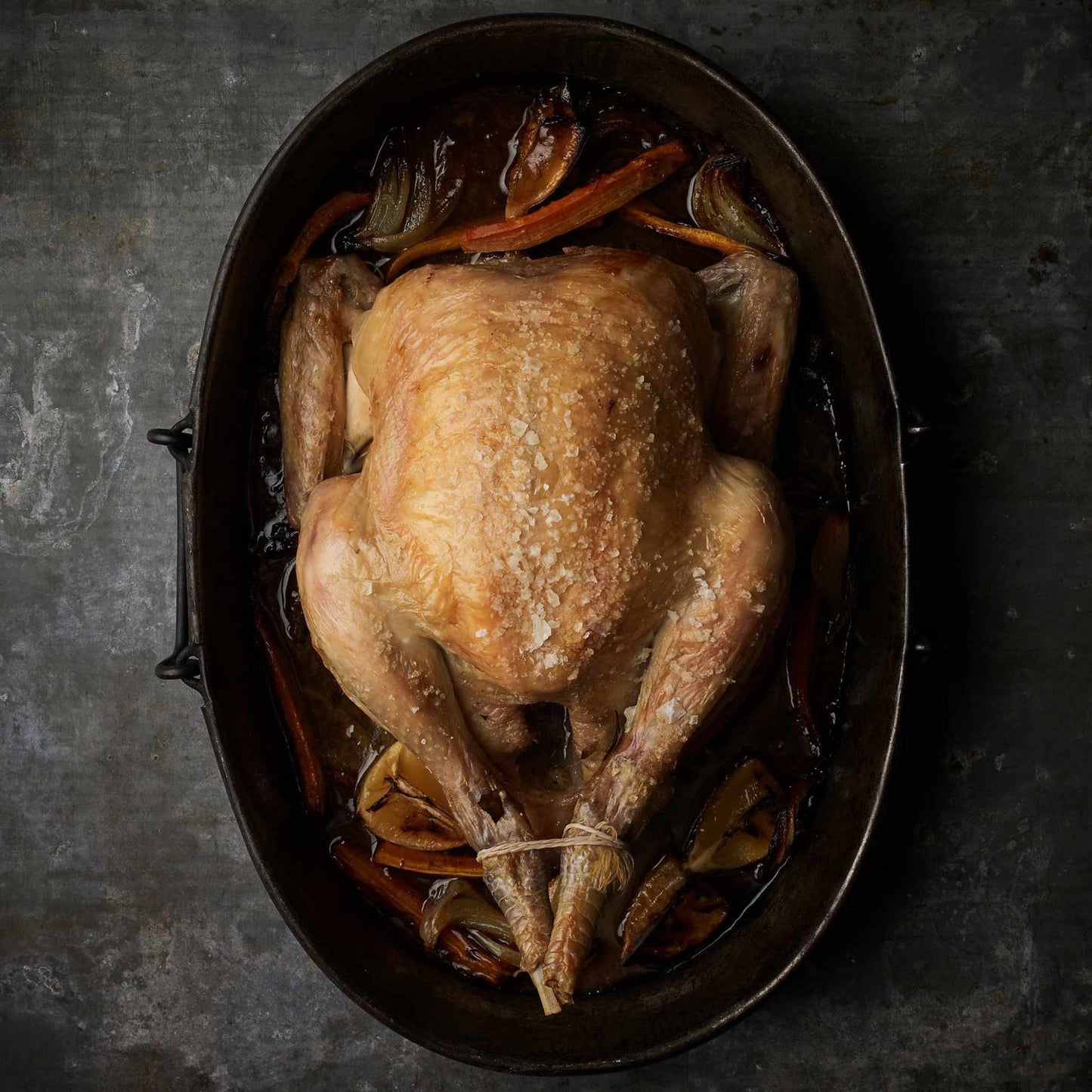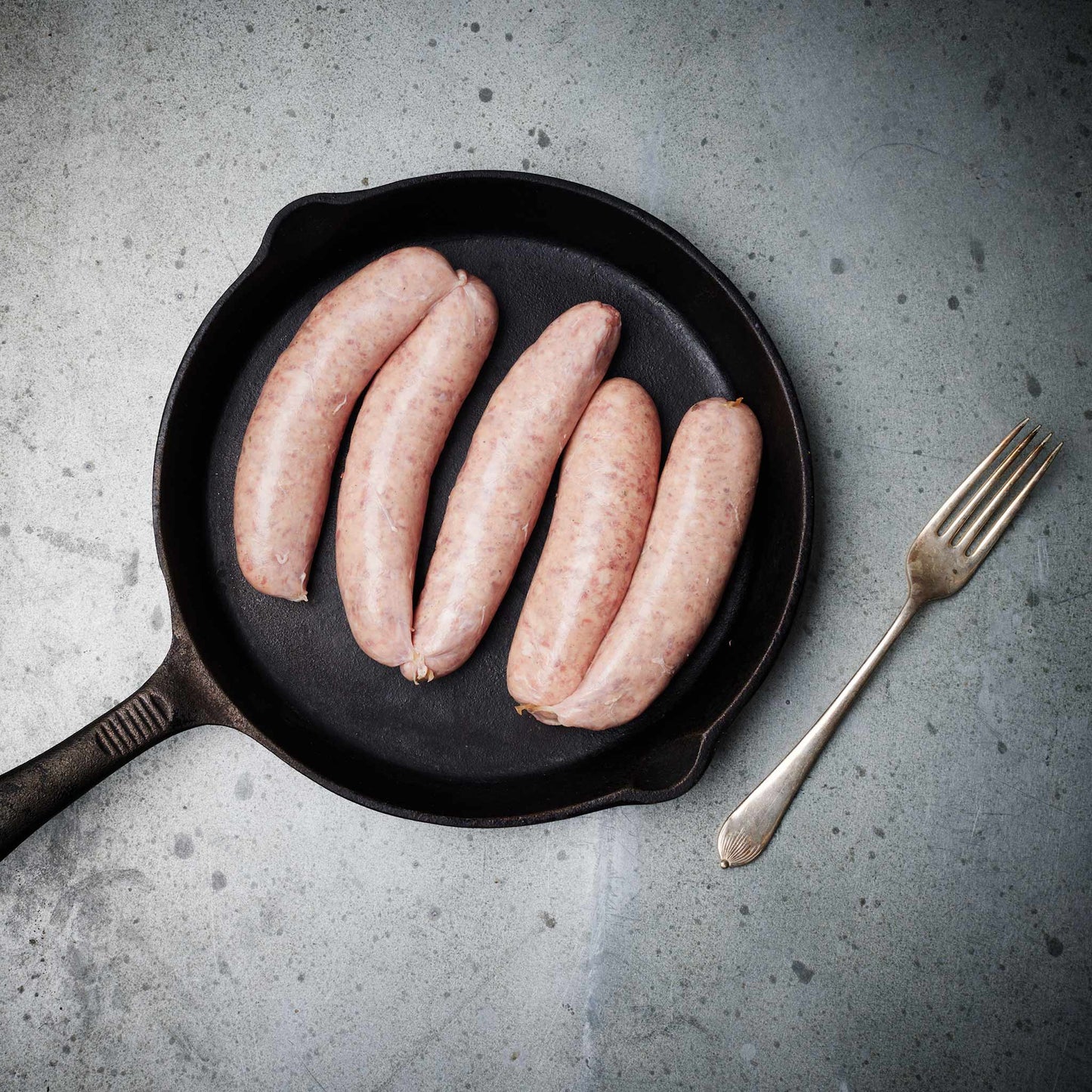We source our chicken from one farm in Leicestershire. The farm is Pasture for Life certified and rears truly free range, outdoor birds.

Many of us now have lost our taste for animal 'innards' (or organ meats) and only consume the muscle meats of animals. But, we're missing out. In general organ meats are 10-100 times higher in nutrients than muscle meats. Liver even contains a significant quantity of vitamin C - which is very rare for an animal based food.
Many traditional cultures only ate the organs of animals and either discarded the muscle meats or fed them to the dogs - they knew where the nutrition really was.
Practically every cuisine has liver specialties. Some cultures place such a high value on liver that human hands can’t touch it! The Li-Chi, a handbook of rituals published during China’s Han era (202B.C. to 220A.D.), lists liver as one of the 'Eight Delicacies'. Throughout most of recorded time humans have preferred liver over steak regarding it as a source of great strength and providing almost magical curative powers.
A popular objection to eating liver is the belief that the liver is a storage organ for toxins in the body. While it is true that one of the liver’s role is to neutralise toxins (such as drugs, chemical agents and poisons), it does not store these toxins. Toxins the body cannot eliminate are likely to accumulate in the body’s fatty tissues and nervous systems. The liver is a storage organ for many important nutrients (vitamins A, D, E, K, B12 and folic acid, and minerals such as copper and iron). These nutrients provide the body with some of the tools it needs to get rid of toxins.
When discussing the nutrition, we should ask what makes it so special?
To start with, it's simply an excellent source of complete protein but it gets better... much better
Vitamin A
The most concentrated form of vitamin A is found in nature. It's worth remembering that plants do not contain any vitamin A but contain β-carotene which is a pre-cursor. The vitamin A equivalency ratio for βcarotene to vitamin A is currently estimated as 12:1 by weight - assuming full conversion. In reality, even if a person is a good converter the rate of beta carotene converted is in the range of 9-22% - some not at all.
So what does vitamin A do for us?
Well being a vitamin it's essential for life so that's kind of important! It's required for healthy vision, skin and bones. Vitamin A also works as an antioxidant, fighting cell damage and getting involved in cell metabolism!! Vitamin A can also prevent acne and psoriasis.
All of the B Vitamins - especially B12
- thiamin (vitamin B1)
- riboflavin (vitamin B2)
- niacin (vitamin B3)
- pantothenic acid
- vitamin B6
- biotin (vitamin B7)
- folate and folic acid
- vitamin B12
We won't go into too much detail about the individual B Vitamins except it's worth digging a little into B12 - this is exclusively found in animal foods and liver is rich in this essential nutrient.
Vitamin B12 is involved in many processes throughout the body but most notably making red blood cells and keeping the nervous system healthy. It also releases energy from the foods we eat. Any deficiency usually shows itself as anaemia at first but can also lead to degeneration of the nervous system if not spotted.
Iron
Dietary iron is found in two forms, heme and non-heme iron. Heme iron, which is present mainly in meat, poultry and fish, is well absorbed. Non-heme iron, which accounts for the majority of the iron in plants, is less well absorbed. More than 95% of functional iron in the human body is in the form of heme. Liver is exceptionally rich in heme iron.
Iron is a mineral vital to the proper function of hemoglobin, a protein needed to transport oxygen in the blood.
Trace elements such as copper, zinc and chromium.
Liver is our best source of copper.
Copper is a component of many enzymes and is needed to produce red and white blood cells.
Zinc's major function of in human metabolism is as a cofactor for numerous enzymes. Zinc has a key role as a catalyst in a wide range of reactions. It is directly or indirectly involved in the major metabolic pathways concerned with protein, lipid, carbohydrate and energy metabolism. It is also essential for cell division and for growth and tissue repair and for normal reproductive development. In addition, zinc is required for the functioning of the immune system and in the structure and function of the skin hence playing a vital role in wound healing.
Chromium in food is in the form Chromium(III) and its main functions appear to be linked with carbohydrate and lipid metabolism. This form of chromium is thought to promote the action of insulin, the hormone which controls glucose levels in the blood. Subjects with adequate dietary chromium have improved control over blood glucose and a better blood lipid profile.
CoQ10 - Coenzyme Q, also known as ubiquinone. In humans, the most common form is Coenzyme Q₁₀ or ubiquinone-10. Liver is very rich in CoQ10 and this is often taken as a supplement. Its functions are varied but one of its most important roles is to help generate energy in your cells. It’s involved in making adenosine triphosphate (ATP), which is involved in energy transfer within cells. It also acts as a powerful antioxidant and there is evidence linking CoQ10 to cancer prevention.
Ok, hopefully we've convinced you, but how much should you eat?
A good recommendation for liver is one 100-gram serving of beef, lamb or duck liver (about 4 ounces) once or twice a week, providing about 50,000 IU vitamin A per serving. Chicken liver, which is lower in vitamin A, may be consumed a little more frequently if desired.



